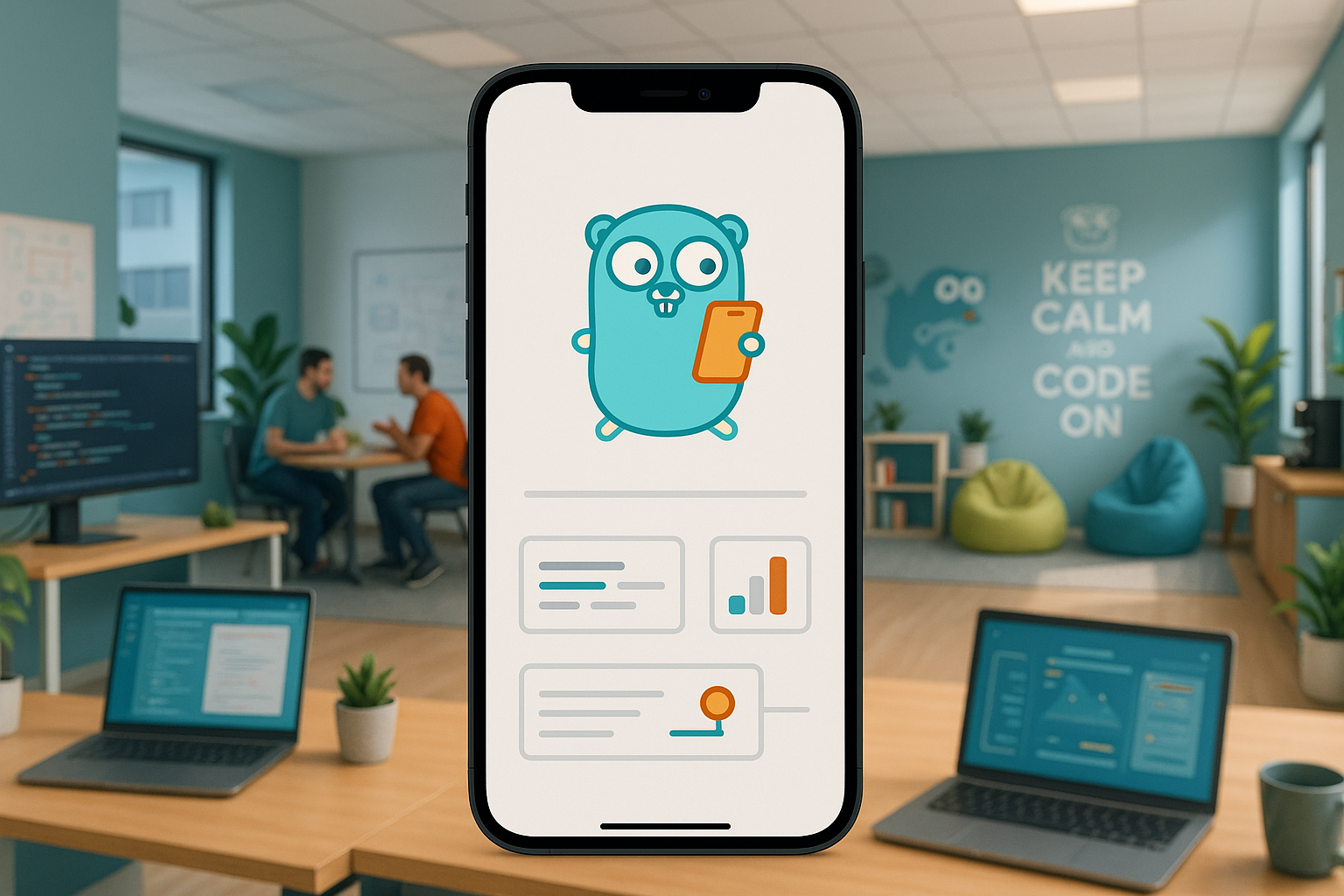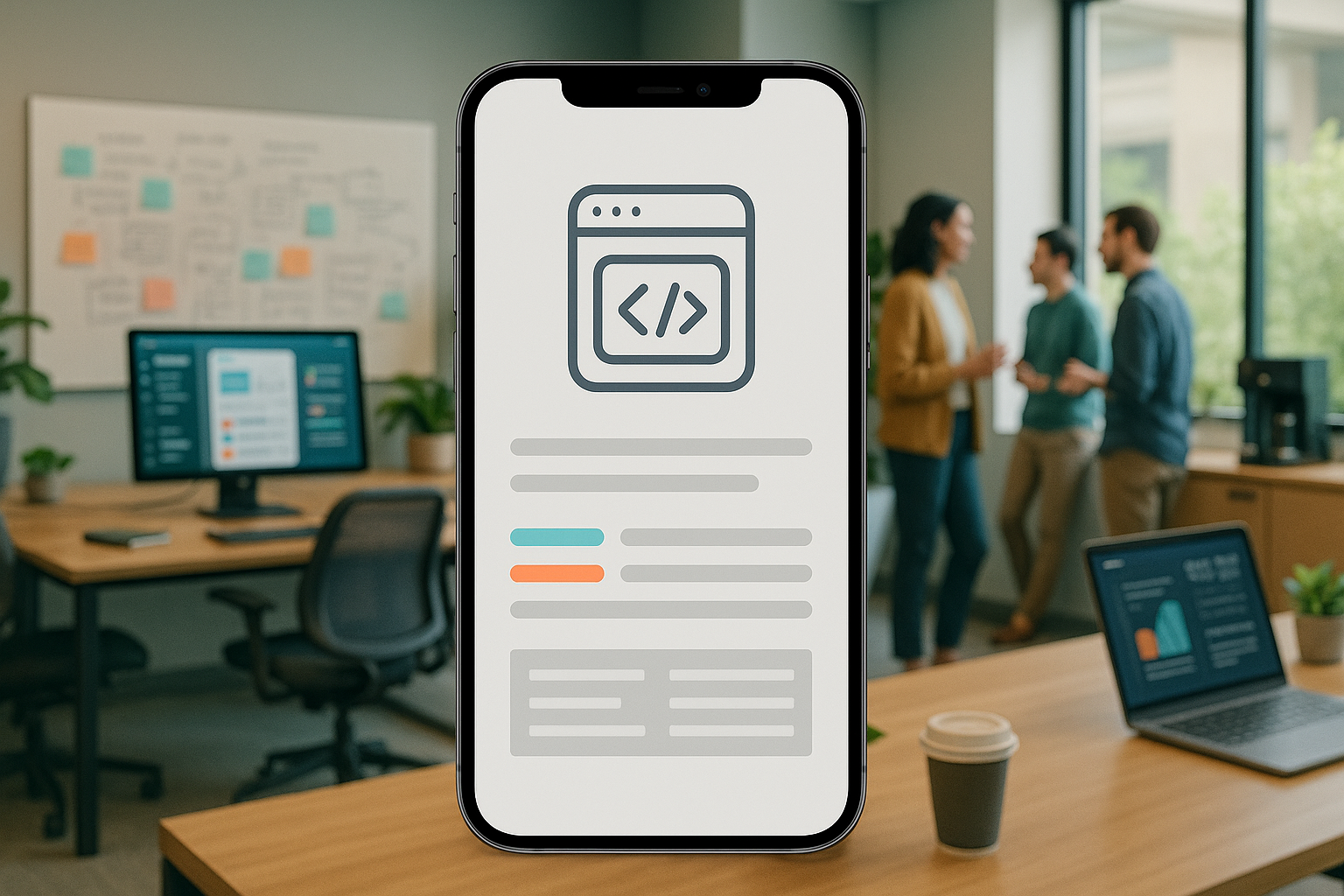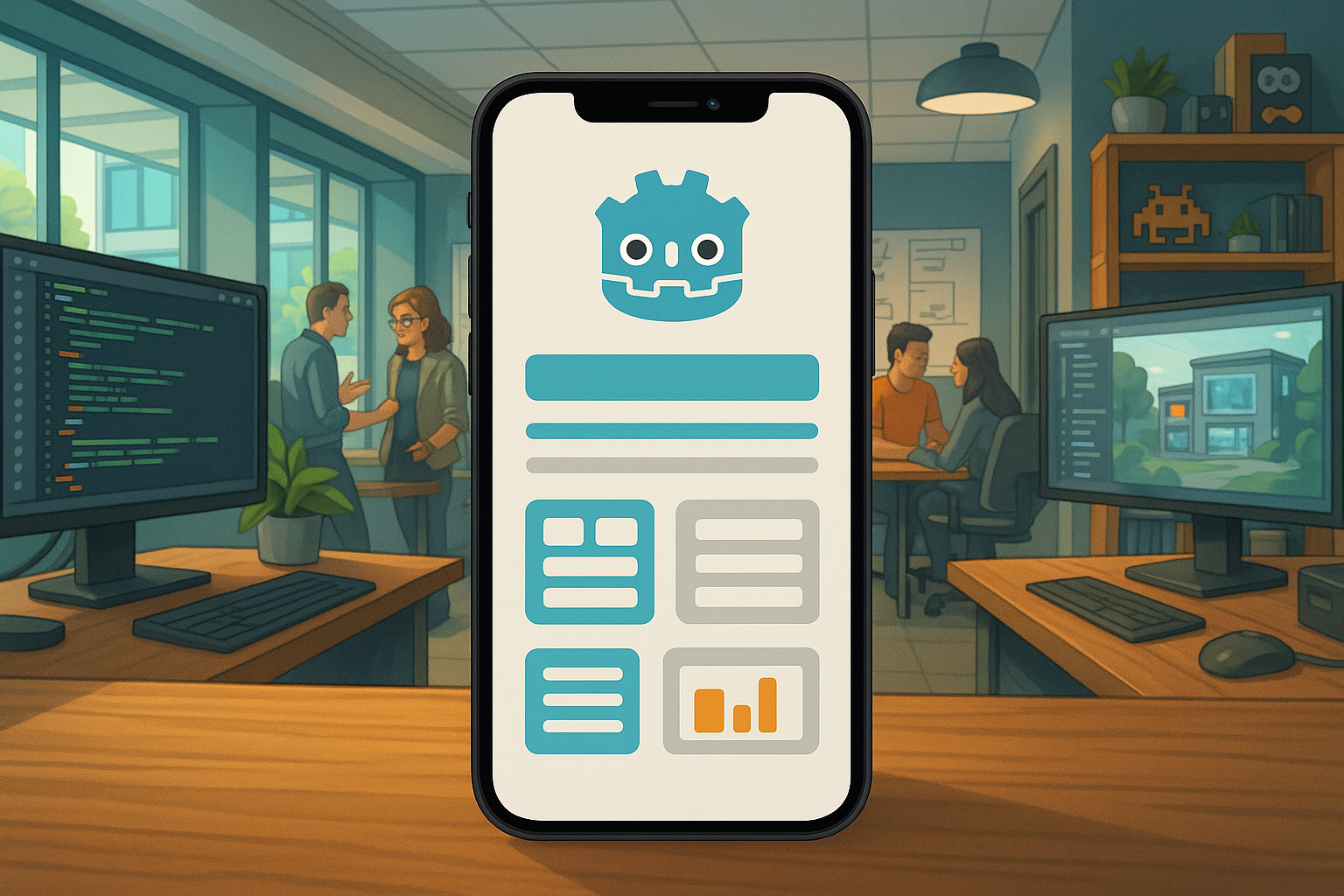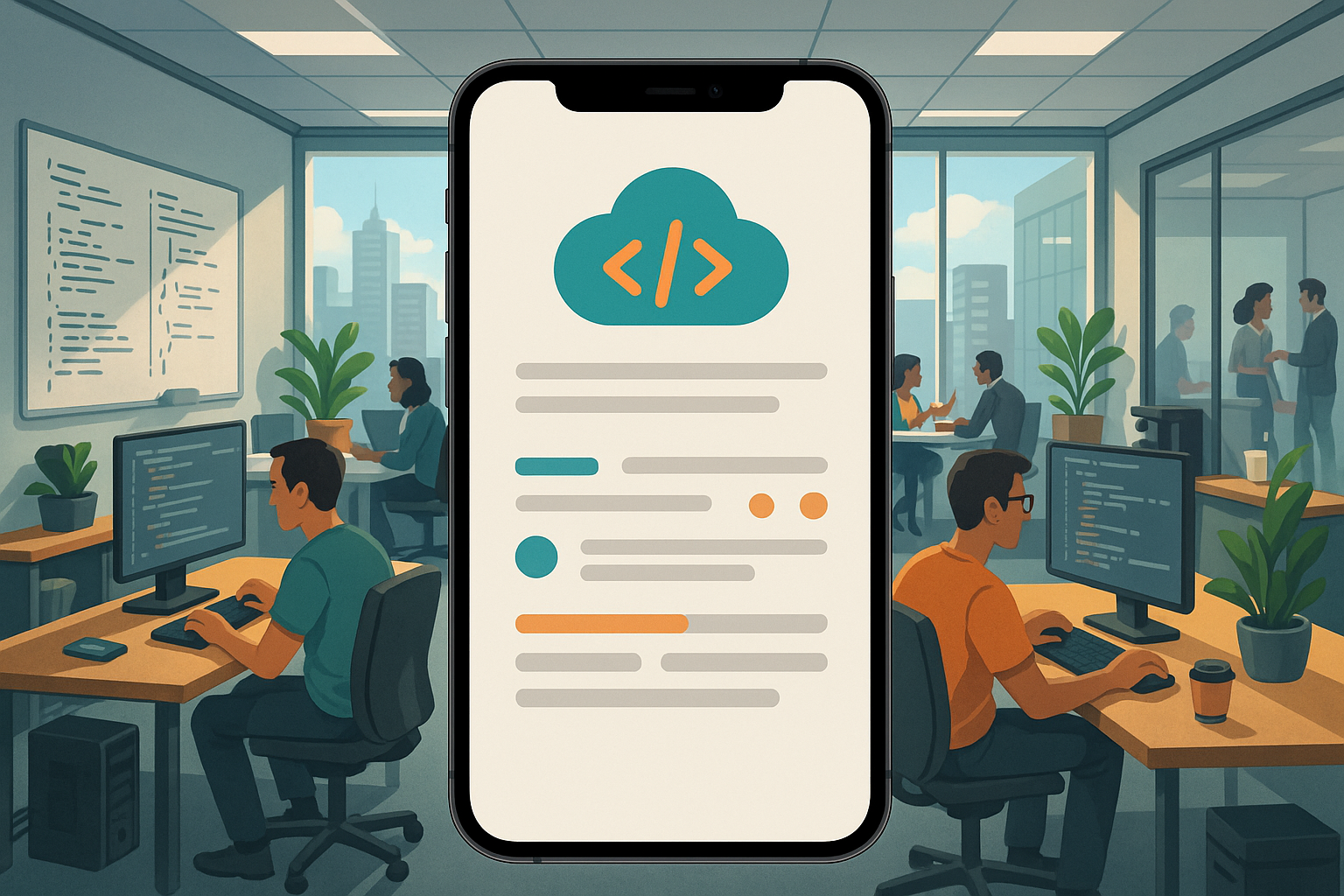Introduction
Go, or Golang, is renowned for its simplicity, efficiency, and powerful concurrency features, making it a stellar choice for backend systems, network services, and command-line interfaces. Many businesses want to leverage these strengths to power their mobile applications. However, the path to integrating Go into a mobile app is fraught with technical hurdles and specific knowledge requirements that can stall even experienced development teams. The dream of a shared, high-performance Go core for both iOS and Android can quickly turn into a frustrating exercise in trial-and-error.
This article serves as a comprehensive guide to the world of Go mobile app development. We will demystify what a “Go app” truly is, explore the significant reasons why developing one in-house is so challenging, and detail the different strategies for integrating Go into your mobile stack. We will also provide insights into development timelines and introduce the landscape of development partners who can help.
As a leading US AI-powered mobile app development firm, we at MetaCTO have deep expertise in navigating these complex integrations. We understand that building a successful mobile application is about more than just writing code; it’s about making smart architectural decisions that align with your business goals. Throughout this guide, we will share our perspective on how to successfully leverage Go’s power for your mobile product, avoiding the common pitfalls and accelerating your time to market.
What is a Go App?
When we talk about a “Go app” in the context of mobile, it’s crucial to understand that we are not typically referring to an application where the entire codebase, including the user interface, is written in Go. Instead, a Go mobile app leverages Go for specific parts of its logic, often for performance-critical or shared components, while the user interface and platform-specific code remain in their native languages (Swift/Objective-C for iOS, Kotlin/Java for Android).
The magic that makes this possible comes from the Go mobile subrepository, an official project that adds support for Android and iOS platforms. This subrepository provides the essential tools required to build and integrate Go code into mobile applications.
At the heart of this ecosystem is the gomobile tool. This command-line utility is the cornerstone of Go mobile development, designed to handle the complex build and binding processes. It requires Go version 1.16 or higher to install and use. The gomobile tool fully supports Go Modules, allowing developers to manage dependencies in a modern, standardized way.
The core concept is to write a piece of business logic once in a Go package. The gomobile tool then processes this package and generates a “binding” — a bridge that allows native code to call the functions within your Go package. This enables you to build a shared, high-performance engine for tasks like data processing, complex calculations, or network communication, and use it across both your Android and iOS apps. This approach combines the performance of Go with the native user experience that mobile users expect.
Reasons That it is Difficult to Develop a Go App In-House
While the promise of a shared Go codebase is alluring, the practical reality of implementation is laden with challenges that can easily overwhelm an in-house team without specific, deep-seated experience in this niche. The primary obstacle is a fundamental one: Go does not provide native support for mobile app development out of the box.
This lack of native support, even with a framework like gomobile, cascades into a series of technical and operational difficulties. It results in what the experts call “additional effort and complexity when integrating platform-specific functionalities or optimizing performance.” Let’s break down exactly what this means for your team.
The Steep Technical Learning Curve
An in-house team must become experts in three distinct domains simultaneously: their native platform (iOS or Android), the Go language, and the intricate bridge that connects them. This is not a trivial undertaking.
-
Complex Tooling and Environment Setup: Getting started requires more than a simple installation. Developers need a specific version of Go (1.16 or above) and, for any iOS development, a macOS machine equipped with the Xcode Command Line Tools. This is just the baseline.
-
The Nuances of the Binding Process: The
gomobiletool automates a highly complex process, but it’s not a black box you can ignore. Understanding what happens under the hood is critical for debugging. The process generates language bindings that have a performance overhead. An inexperienced team might not account for this, leading to an app that doesn’t meet performance targets. Furthermore, there are limitations on how exported Go APIs should look due to the constraints of the target languages (Java and Objective-C). A perfectly valid Go function might not be bindable, forcing frustrating refactors. -
Data Type Limitations: A significant “gotcha” for many teams is that only a subset of Go types are currently supported for binding. An engineer could spend weeks crafting a sophisticated Go package, only to discover at the integration stage that its core data structures cannot be exposed to the native mobile code. This can lead to significant delays and architectural redesigns.
The “Death by a Thousand Cuts” of Integration
Beyond the high-level challenges, the day-to-day work of integrating Go is filled with subtle issues that can derail a project.
-
Manual Build and Deployment Steps: The process is not a seamless, one-click build. For Android, developers must manually copy the generated
.aarand.jarfiles into the correct project folder and then edit thebuild.gradlefile to add aflatDirrepository and the implementation dependency. For iOS, they must drag the generated.frameworkbundle into Xcode, manage “Copy items if needed” settings, and potentially configure Framework Search Paths in the project’s build settings. Each of these steps is a potential point of failure. -
Fragile Dependency Management: Go mobile projects have a peculiar dependency requirement. The
go getcommand automatically adds necessary “indirect” references to thego.modfile. However, many standard IDEs or a simplego mod tidycommand can mistakenly identify these essential references as unused and delete them, breaking the build. An engineer could waste hours or even days tracking down a problem that was caused by their own tools “helpfully” cleaning up the project. -
Platform-Specific Quirks and Incompatibilities: The list of platform-specific issues is long. For example,
gomobilesupports a range of CPU architectures (ARM, ARM64, 386, amd64) but does not yet support Android on MIPS devices. More vexing is the iOS simulator issue: as of Go 1.5, onlydarwin/amd64works on the simulator. If a developer has their Xcode project configured to build for both 32-bit and 64-bit ARM (a common setup), Xcode will try to run a 32-bit binary on the simulator, which fails. The fix requires modifying Xcode’s build settings to only build the 64-bit ARM architecture, which then allows the simulator to fall back to the workingamd64binary. This is precisely the kind of deep, non-obvious knowledge that can only be gained through experience.
The MetaCTO Advantage
These challenges highlight why partnering with a specialized agency is often the most efficient and cost-effective path. When you work with us, you aren’t just hiring developers; you are leveraging years of experience navigating these exact problems. Our teams have already streamlined the build processes, understand the API and type limitations, and know how to debug the obscure, platform-specific issues that can sink a project. Whether through our hands-on mobile app development services or strategic guidance from a Fractional CTO, we provide the expertise to bypass the learning curve and integrate Go correctly from day one.
Different Types of Go Apps
The Go mobile project supports two distinct strategies for incorporating Go into a mobile application. The choice between them depends entirely on your project’s goals, existing codebase, and technical requirements.
Strategy 1: All-Go Native Mobile Applications
The most ambitious approach is to write your entire mobile application in Go. This strategy is best suited for applications that are heavily focused on graphics, custom UIs, or game-like interactions, where you want to control every pixel on the screen directly.
-
Core Technology: This method relies heavily on the
golang.org/x/mobilepackages, which provide Go-centric APIs for fundamental mobile app functions. These packages focus on:- App control and configuration
- OpenGL ES 2 and ES 3 bindings for graphics rendering
- Asset management (loading images, sounds, etc.)
- Event management (touch, lifecycle events)
- OpenAL bindings for audio playback
- Support for fonts, sprites, and motion sensors
-
Build Process: The
gomobile buildcommand is used to compile the Go package into a complete, runnable application.- For Android, it produces an APK file (e.g.,
basic.apk). You can provide a customAndroidManifest.xmlin your package directory to be included; otherwise, a default manifest is generated. - For iOS, this command produces an application bundle (e.g.,
basic.app). A crucial requirement is that building for iOS must be done on a macOS host machine. A valid signing identity and provisioning profiles are also necessary for deployment.
- For Android, it produces an APK file (e.g.,
-
Deployment: Once built, these all-Go applications can be deployed to devices.
- On Android, the
gomobile installcommand can build and push the APK directly to a connected device, provided the Android Debug Bridge (adb) is installed. - On iOS, the
.appfile can be deployed by dragging and dropping it to a device in Xcode or by using theios-deploycommand-line utility.
- On Android, the
You can even set a custom app icon for your native Go application by simply placing an icon.png file in an assets directory within your project.
Strategy 2: SDK Applications (Binding to Native Code)
This is the far more common and often more practical strategy. Here, you write a specific piece of common functionality in a Go package and then use the gomobile tool to generate a library or framework that can be called from your standard native Android and iOS projects.
-
Core Advantage: The primary benefit is code sharing and reuse. You can write complex business logic, data synchronization, or a custom networking layer once in Go and use it across both platforms. This also allows you to reuse existing Go packages from your backend or other projects without significant changes.
-
The Build Process (
gomobile bind): This command is used to generate the platform-specific bindings.- For Android, it generates an Android Archive (
.aar) file. This file contains the compiled Go code and the necessary Java interfaces for calling it. From Go 1.16, it is recommended to rungo get -d golang.org/x/mobile/cmd/gomobilebefore each execution to ensure dependencies are correct. - For iOS, it generates a framework bundle (e.g.,
Hello.framework). This bundle contains the compiled Go code and the Objective-C headers needed to interact with it from Swift or Objective-C code.
- For Android, it generates an Android Archive (
-
Integration and Usage:
- On Android, the developer must copy the generated
.aarfile to the project’sappfolder and then modify theapp/build.gradlefile to add aflatDirrepository and animplementationdependency on the new module. - On iOS, the developer can drag the generated
.frameworkinto their Xcode project. If the framework is kept in the main project directory, the project’s “Framework Search Paths” must be updated in the Build Settings. Once imported, the Go functions become available to the native code. For example, a Go function likehello.Greetingscould be invoked from Swift by importing theHellomodule and callingGoHelloGreetings(). The returned string can then be used to update a UI label or any other native component.
- On Android, the developer must copy the generated
This SDK approach offers a powerful balance, allowing you to leverage Go’s performance where it matters most while retaining the rich, native UI toolkits of iOS and Android for the best possible user experience.
Cost Estimate for Developing a Go App
Determining a precise cost for developing a “Go app” is challenging because the final figure depends on a vast number of variables, including application complexity, the extent of the Go integration, and the experience level of the development team. However, we can analyze the factors that influence the timeline and budget.
It’s more productive to think about cost in terms of development time. In a specific benchmarking scenario at the company Stream, a feature built in Go reportedly took 4 days to write. It is critical to contextualize this data point. This was for a single feature, written by a team that likely has deep expertise in Go. This number represents the time to write the core Go logic, not the full lifecycle of integration, testing, and debugging across two mobile platforms.
The true cost of in-house Go mobile development is often hidden in the “unseen” work we detailed earlier:
- Time spent setting up the complex build environment.
- Hours lost debugging binding-layer issues.
- Delays caused by discovering a core feature uses an unsupported Go type.
- Days spent troubleshooting why the app works on a device but not the iOS simulator.
These activities don’t contribute directly to new features but are a necessary tax on the project’s timeline and budget. An agency that has already built this institutional knowledge can avoid these pitfalls, turning unpredictable research spikes into a predictable development process.
At MetaCTO, we focus on delivering value efficiently. Our Rapid MVP Development service, for example, is designed to launch a functional product in just 90 days. When we incorporate a technology like Go, our cost and timeline estimates are based on a realistic understanding of the entire integration process, not just the time spent writing the Go code itself. By partnering with us, you are investing in a predictable outcome and mitigating the risk of costly delays caused by a steep technical learning curve.
Top Go App Development Companies
The Go ecosystem is robust, with an estimated 895 top Golang companies operating in the space. This large number indicates a healthy and growing demand for Go expertise. However, it’s crucial to understand that general Go backend development is a very different skill set from the niche specialty of integrating Go into mobile applications. When choosing a partner, you must look for demonstrated experience with the gomobile toolchain and a deep understanding of both Android and iOS native development.
1. MetaCTO
At MetaCTO, we position ourselves at the intersection of advanced backend technology and expert mobile app development. As a premier US-based, AI-powered development firm, we don’t just write code; we architect solutions. We specialize in the exact kind of complex technical integrations that Go mobile development demands.
Our expertise is tailored to overcome the challenges that frustrate in-house teams. We have mastered the gomobile toolchain, understand the nuances of the binding process, and have already developed the best practices for build configurations, dependency management, and platform-specific debugging. Our process handles every step, from defining the strategy for your shared Go core to building the bindings, integrating with the native UI, and launching a polished, high-performance application to the app stores.
By leveraging our AI development and mobile expertise, we ensure that your Go integration is not just a technical novelty, but a strategic advantage that enhances your app’s performance and accelerates your business goals.
The Broader Landscape
While there are hundreds of other firms that list Golang as a capability, it is vital for any company considering a development partner to perform due diligence. Ask specific questions about their experience with golang.org/x/mobile. Inquire about past projects where they have successfully bound a Go SDK into both an Android and iOS application. Request to speak with developers who have hands-on experience with the gomobile build and gomobile bind commands. A true expert partner will be able to speak fluently about the limitations of bindable types, the performance overhead of the binding layer, and the specific Xcode build settings required to work with the iOS simulator. Choosing a partner with proven, specific experience in this area is the single most important factor for success.
Conclusion
Go offers a compelling proposition for mobile app development: the ability to write high-performance, concurrent code once and share it across both iOS and Android. This journey, powered by the Go mobile subrepository and the gomobile tool, provides two distinct paths—fully native Go applications for graphics-intensive projects, and the more common SDK approach for sharing a common logic core.
However, as we’ve detailed, this path is not without its obstacles. The lack of out-of-the-box native support introduces significant complexity, from a tricky toolchain setup and a fragile binding process to subtle, platform-specific quirks that can derail a project for days. These challenges make in-house development a risky and often expensive proposition for teams that lack prior, specific experience in this domain. Success requires more than just knowing Go; it requires a deep, practical understanding of the bridge that connects it to the mobile world.
Choosing the right development partner is paramount. An expert team can transform the potential pitfalls of Go mobile development into a streamlined, predictable process, allowing you to reap the benefits of Go’s performance without the cost of a painful learning curve.
Integrating Go into your mobile product doesn’t have to be a journey filled with trial and error. Our team of experts has navigated these challenges and can provide the strategy and execution needed for success. Talk with a Go expert at MetaCTO today to discuss how we can integrate Go’s performance and efficiency into your product.






